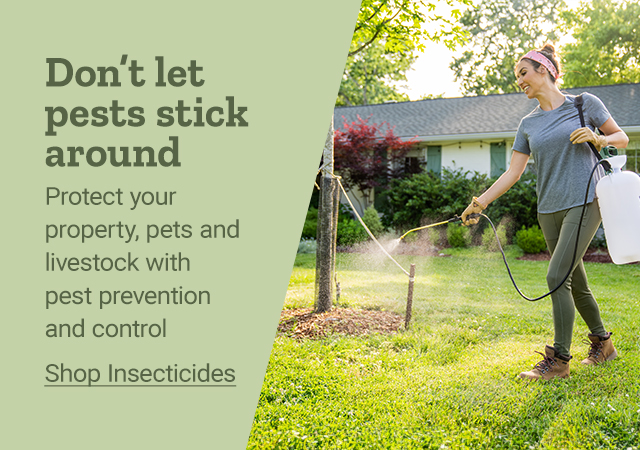Emergency Pest Control Homestead Assistance Available 24/7
Emergency Pest Control Homestead Assistance Available 24/7
Blog Article
Discover the Secrets of Insect Control: Just How It Works and Refine Revealed
Bug control is a thorough technique that involves a deep understanding of bug behavior, calculated preparation, and accurate execution. From determining the origin triggers of infestations to executing tailored control procedures, the procedure of bug control is a blend of science and strategy aimed at maintaining an unified setting.
Pest Actions Recognizing
Understanding the elaborate actions of insects is critical for reliable insect control management. By delving right into the habits and patterns of different parasites, professionals can develop targeted methods to eliminate invasions and prevent future events. The behavior of roaches, such as their preference for damp and dark atmospheres, overviews pest control professionals in establishing where to concentrate therapy efforts. Recognizing that rodents are nocturnal creatures helps in establishing up catches and baits throughout the most energetic hours. Additionally, understanding the reproductive cycles of bugs like ants aids in interrupting their colonies' development.
In addition, comprehending just how pests communicate with their environment and react to exterior stimuli can improve the performance of control approaches. For instance, some pests show indications of resistance to certain pesticides, requiring making use of alternative chemicals or techniques. By staying abreast of the current study on bug actions, bug control specialists can continuously improve their techniques and remain ahead of developing insect populaces. Ultimately, a deep understanding of insect actions is a cornerstone of effective pest control administration.

Examination and Identification Approaches
Effective pest control management relies greatly on careful assessment and exact recognition approaches to properly develop and analyze invasions targeted elimination methods. Examination involves a thorough assessment of the residential property to determine the extent of the pest issue, recognize the kind of pest existing, and locate prospective access factors. This process may include visually examining common hiding spots, using monitoring tools such as catches or cams, and examining pest droppings or damage signs.
Recognition is a vital action that adheres to evaluation, as different bugs need specific treatment approaches. Bug control specialists utilize their experience and expertise of bug behavior to determine the types existing properly. This might involve analyzing physical characteristics, such as dimension, shade, and markings, as well as examining the insect's environments and behaviors. In some situations, examples might be accumulated for more analysis in a laboratory to verify the parasite varieties.
Bug Control Procedures Application
Having actually meticulously examined and properly determined the parasites present, the following vital action is the execution of targeted pest control steps to properly eliminate the invasion. Chemical therapies include the usage of pesticides to get rid of bugs, while biological controls present all-natural predators to handle bug this post populations.
Correct application of pest control actions needs competence to ensure the safety and security of inhabitants and the environment. By utilizing targeted pest control actions, problems can be efficiently eradicated, developing a healthier and pest-free atmosphere.
Ecological Impact Considerations
Cautious assessment of the possible environmental impact is an essential element when implementing insect control steps. Insect control techniques can have numerous effects on the atmosphere, including non-target varieties being influenced, contamination of dirt and water resources, and disruption of the environment. It is vital to take into consideration these factors to reduce any unfavorable consequences on the setting.
To mitigate environmental effects, incorporated pest administration (IPM) approaches are usually suggested. IPM concentrates on utilizing a mix of methods Learn More such as biological control, environment control, and the targeted use of pesticides as a last hotel. Pest Control Homestead. By utilizing an alternative technique, IPM aims to manage insects efficiently while decreasing injury to the setting

Ongoing Monitoring and Avoidance
Constant surveillance and prevention play crucial roles in maintaining efficient pest control strategies with time. Once preliminary pest control actions have been executed, recurring surveillance comes to be necessary to track bug task levels and ensure that the picked approaches are working successfully. Routine evaluations by qualified specialists enable for the very early detection of any kind of signs of insect rebirth, enabling quick action to be taken before the problem intensifies.
Safety nets are similarly essential in maintaining a pest-free setting. Applying strategies such as securing entrance points, keeping tidiness, proper waste management, and minimizing resources of food and water deprive pests of the fundamentals they require to flourish. By proactively attending to these factors, the possibility of a parasite invasion is dramatically reduced.
Moreover, safety nets add to the long-lasting success of insect control initiatives, lessening the need for reactive therapies and associated costs. By incorporating ongoing surveillance and avoidance into a thorough parasite management plan, people investigate this site and companies can efficiently secure their residential properties versus unwanted trespassers.
Conclusion
In final thought, bug control entails understanding parasite actions, performing comprehensive assessments, implementing control steps, taking into consideration environmental impacts, and preserving recurring surveillance and avoidance. By following these actions, pest problems can be successfully handled and managed. It is important to take a positive method to pest control to protect both human health and the environment.
By staying abreast of the most current research on insect behavior, parasite control professionals can constantly improve their techniques and remain in advance of advancing insect populations.Having diligently examined and precisely identified the parasites existing, the following critical action is the application of targeted parasite control steps to effectively eradicate the problem.In addition, choosing environmentally friendly insect control items and approaches can significantly decrease the eco-friendly footprint of bug monitoring practices - Pest Control Homestead. Once preliminary pest control procedures have actually been executed, recurring monitoring becomes crucial to track pest activity levels and make sure that the picked methods are working properly.In conclusion, insect control includes understanding insect habits, carrying out detailed evaluations, carrying out control procedures, taking into consideration ecological influences, and keeping recurring surveillance and avoidance
Report this page